“People are so easily distracted. So I’m the distractor…with a little story. People can’t get enough of them
because, well, people connect the stories to themselves, I suppose. And we all love hearing about ourselves so long as the people in the stories are us. But not us…”
“Things have a way of escalatin’ out here in the west.”
–from the trailer for “The Ballad of Buster Scruggs”
The Coen brothers have a new movie coming out. It’s a western. I’m in it.
A year ago, the Coen brothers and a large crew came to our little piece of the middle of nowhere, the north-west corner of Nebraska bordering South Dakota and Wyoming. Bordering on the Old West. Where we live is a patchwork of dwindling and forgotten towns stitched together by ranches and cattle on the Great Plains. And that’s okay. It’s quiet. The last vestiges of that Old West of real cowboys with spurs and hats…in Walmart, where they still use neckerchiefs, where you can drive long stretches of two-lane road alone past abandoned homesteads. High-speed internet, triple ice-lattés, and folks who’ve heard of the Coen brothers are hard to find.
So when I heard, totally by chance, from my cat’s veterinarian, Dr. Tom, that they were going to film a movie, a western no less, in the area where we live, I was curious. “Who’s doing the movie?” I asked. “The Coen Brothers or something like that? Never heard of them,” he replied. My eyes got big…”The COEN BROTHERS? Really? No kidding?” Uh-oh, the middle of nowhere has been breached.
We love our westerns. The American West, the story writ large. There continues to be a long-standing romance with the idea of the West (yes, big W, capitalized) —fur traders, mountain men, outlaws, pioneers, cowboys and Indians—freedom, rugged independence, and justice…of a sort. We love our old western movies—Stagecoach, Shane, The Magnificent Seven, anything with John Wayne in it and the old TV shows—Gunsmoke, Bonanza, Big Valley. And modern day westerns as well like Longmire and the Coen brothers’ No Country for Old Men and their remake of True Grit. But why? And why would two in-
ternationally acclaimed writer/directors from New York City want to create films with misanthropes and miscreants from a bygone era?
As an artist, I see the landscape as a major player in all this. Monolithic landforms that look the same as they did a hundred years ago. The natural world that still resists a remaking by man. I grew up in rentals in a city in eastern Iowa. All land was civilized, sectioned, quartered, and had been spoken for. For me, the only way I could envision a future was to move West. As for others, that western landscape was freedom, the promise of a new start and the space to imagine the ghosts of the past. You can hear yourself think out here. “Those who cannot remember the past are condemned to repeat it,” says writer and philosopher, George Santayna. Or maybe another Santayana quote is fitting, “The living have never shown me how to live.” The dead have stories to tell if we listen.
I have been skimming The Philosophy of the Coen Brothers, a book of essays by academics connecting (sometimes tenuously) Western philosophy (as in Plato, Nietzsche, Sartre not Will Rogers and Baxter Black) to plots, characters, and themes in the Coen brothers’ movies. One essay in the book talks about Greek tragedy and the western—a good but flawed human becomes entrapped in events that will be their downfall. Is that what this is about? Or is it an existentialist’s conundrum—the individual’s fight to construct a meaningful life in the face of absurdity and ultimate doom? I wonder if the Coen brothers are interested in western landscape? Though I assume they spend a majority of their time in urban areas could there be a
little bit of awe and yearning for the West? Or is it that western landscape is a foil like no other that lays utterly bare the human folly and highlights human stupidity. Or the downright tragedy of life. Without the manmade artifice, we can see the true nature of the human being, as naked as Adam and Eve. The wilderness does not give advantages or play favorites. If you are stupid, careless, or unlucky, it can
still kill you.
There was a call for extras “looking for ordinary Nebraskans to play settlers on the wagon trail.” I stood in line with 700 other “ordinary” Nebraskans (and Wyomingites and Coloradans) and a month and half later I found myself in a long pioneer dress (from a movie costume clearinghouse in LA —maybe the dress had been worn long ago in one of those old western movies or tv shows), a bonnet, lacing up black leather boots to walk in circles next to covered wagons and oxen. I had gotten my secret wish—to travel back in time and experience the “Old West.” Without, as one recent western movie spoof put it, A Million Ways to Die in the West. Nearly one in ten of the emigrants who set out on the Oregon Trail perished, mostly from disease or accidents.
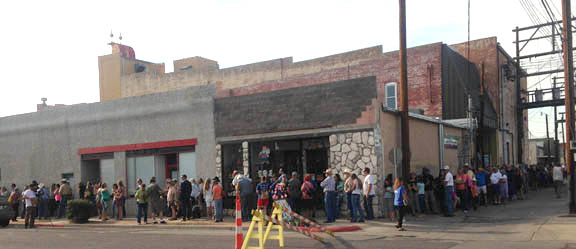
Aug. 1, 2017, the casting call for settlers on the wagon train for the Coen brothers production, Midwest Theatre, Scottsbluff, Nebraska
From the Oregon-California Trails Association: “Accidents were caused by negligence, exhaustion, guns, animals, and the weather. Shootings were common, but murders were rare — one usually shot oneself, a friend, or perhaps one of the draft animals when a gun discharged accidentally. Shootings, drownings, being crushed by wagon wheels, and injuries from handling domestic animals were the biggest accidental killers on the Trail. Any one of these four causes of death claimed more lives than were lost to sharp instruments, falling objects, rattlesnakes, buffalo hunts, hail, lightning, and other calamities.”
Indians were the least of their worries. The disease which claimed many was Asiatic cholera, called the “unseen destroyer,” caused by unsanitary conditions. We were posers, faux pioneers with bottled water, deluxe Hollywood porta-potties with flush toilets and sinks with running water and soap, and catered meals of salmon, chicken, asparagus, fresh-squeezed orange juice, and cheesecake which we ate in a heated or air-conditioned trailer depending on the variable September weather. But if you looked in just the right direction and only saw the wagons and us ragged pioneer folk and the endless prairie and sky, it gave you shivers, as our Academy Award-nominated costume designer, Mary Zophres, said when the crew saw us for the first time walking across the prairie towards them.
 On the first day of filming we start late in the day and work late into the night. Most of our time is spent in “holding” sitting on chairs a safe sound distance from the filming until we are needed in the background. Nate, the Set Production Assistant, in charge of the extras, appears out of the darkness and sings out “Who wants to be a star?!” This becomes the alert for the eager to jump to their feet in hopes of getting picked as an extra in a smaller scene. He leads them over to where the main scene is being shot and works them into to doing things in the background—walking through the camp, carrying a gun, pouring coffee. There is a large crew continually moving around the Coen brothers who look at monitors and direct the positioning of props, actors, and lights. There are at least 4 monitors for viewing the camera work. Lights and diffuser shades are positioned and repositioned. Props are moved. And, yes, there are the “director’s chairs” but there are six or seven of them. On the back, they all say “The Ballad of Buster Scruggs.” (I didn’t find out until the last day that on the front of the chair is, indeed, the directors’ and actors’ names.) There is a rare moment when one of the Coen brothers are sitting. The chairs are used when Joel Coen has long conversation with the female lead, Zoe Kazan, who is bundled up in a blanket. An assistant takes kleenex to the male lead, William Heck, before a take.
On the first day of filming we start late in the day and work late into the night. Most of our time is spent in “holding” sitting on chairs a safe sound distance from the filming until we are needed in the background. Nate, the Set Production Assistant, in charge of the extras, appears out of the darkness and sings out “Who wants to be a star?!” This becomes the alert for the eager to jump to their feet in hopes of getting picked as an extra in a smaller scene. He leads them over to where the main scene is being shot and works them into to doing things in the background—walking through the camp, carrying a gun, pouring coffee. There is a large crew continually moving around the Coen brothers who look at monitors and direct the positioning of props, actors, and lights. There are at least 4 monitors for viewing the camera work. Lights and diffuser shades are positioned and repositioned. Props are moved. And, yes, there are the “director’s chairs” but there are six or seven of them. On the back, they all say “The Ballad of Buster Scruggs.” (I didn’t find out until the last day that on the front of the chair is, indeed, the directors’ and actors’ names.) There is a rare moment when one of the Coen brothers are sitting. The chairs are used when Joel Coen has long conversation with the female lead, Zoe Kazan, who is bundled up in a blanket. An assistant takes kleenex to the male lead, William Heck, before a take.
I watch raptly as the main actors perform a take. Joel Coen walks over to them and in a calm voice, kindly suggests a different approach… “That was good but what about trying a longer pause here.” Everyone takes their places again— “Quiet, everyone…We are rolling…Rolling, Rolling…Background…Action.” Another take, more looks at the monitor and discussion. I smile when I hear Ethan Coen laugh. This one scene, of maybe, fifteen-minute dialogue, takes five hours for set-up and completion. I am struck by the image of Joel and Ethan Coen, looking into a large monitor, the light from it glowing through their glasses and curly hair and thinking here are two brothers engaged in play with this army of resources.
Fourteen and a half hours later after we had our call time of 1:00 pm, we are back on the bus to Base Camp, bumping and rattling in the black night. There is less talking than on the earlier bus rides. All we can see are headlights of vans and trucks that must drive up on the bank alongside us to let the behemoth bus pass on the one lane dirt ranch road. And the dark outline of hills and buttes against stars. We change back into our street clothes, sign out, and follow a line of vehicles heading south on the highway to our individual accommodations. It is 3:30 in the morning. We have just worked fourteen and a half hours. Many of the production crew have worked even longer today.
Most of our “on camera” work involves walking alongside the large covered wagons pulled by oxen and few horses. We walk for about ten feet as the wagons creak and groan and then we hear “Cut.” I end up at
a wagon with Matt, our affable Mennonite minister. He is younger but wise and thoughtful beyond his years. In one of the first days of shooting, we walked back from the wagons and continued our engaging conversation on the bus. First marveling at how the pioneers ever did this. “I can’t even imagine. They had no idea what was ahead of them, if they had enough food, where they would find water.”
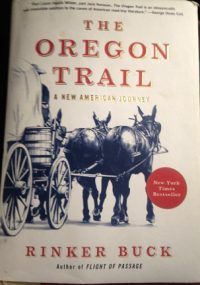 He asks me if I have heard of the book, The Oregon Trail by Rinker Buck. “It’s a modern-day guy who actually drives a wagon over the Oregon Trail and then wrote about all his experiences. He had a wagon break down in our town and some of the folks helped him out and got him back on his way.” “That sounds fascinating,” I reply. On the last day, he brings the book to me and I randomly open to page 171 and the author is talking about Nebraska…“Nick called the instant bonding we were making on the trip ‘trail family.’ In Nebraska, we never lacked for trail family.” I continue reading down the page… “The single biggest error newcomers to the trail make is believing that it was this single set of ruts crossing the plains…”
He asks me if I have heard of the book, The Oregon Trail by Rinker Buck. “It’s a modern-day guy who actually drives a wagon over the Oregon Trail and then wrote about all his experiences. He had a wagon break down in our town and some of the folks helped him out and got him back on his way.” “That sounds fascinating,” I reply. On the last day, he brings the book to me and I randomly open to page 171 and the author is talking about Nebraska…“Nick called the instant bonding we were making on the trip ‘trail family.’ In Nebraska, we never lacked for trail family.” I continue reading down the page… “The single biggest error newcomers to the trail make is believing that it was this single set of ruts crossing the plains…”
I tell him that my family didn’t get much past eastern Iowa—“all Irish and German farm families.” I ask where his people came from. “They were Swiss and German.” I ask about Mennonite and Amish. Probably a common and misinformed comparison many make and he gently explains the differences. “There are different branches of Mennonites—what I am from is a bit more mainstream.” (Even though with his full, dark beard and 19th century costume he looks very much of the old order.) “There are more conservative Mennonites who have restrictions in dress and how much modern technology they use, similar to the Amish.”
I tell him I think simpler times and less reliance on technology might not be a bad thing and he nods in agreement. I am glad to be hanging out with him again and today, between takes, we talk more about spirituality and the happenings in the world. Life in the 21st century is no less harsh and absurd than it might have been in the 19th century—just different kinds of harshness and absurdity. And now we have more time and accelerated ways to excoriate ourselves into existentialist despair. So we hold on to the centering of spiritual practices and try to be hopeful about the future because he has a congregation
to preach to and lead and because I have young people to teach and encourage. I enjoy our conversation so much that it’s not disappointing to realize that by the time we are moved forward in the wagon order and just about to the camera frame directly behind the main actors, the directors call it a wrap and this scene is done.
This filming work in Nebraska is only one episode of The Ballad of Buster Scruggs “western anthology film.” Other parts of the movie were filmed in New Mexico and Colorado. When some of us asked Elizabeth, the casting director who had been working on all the episodes, just what this whole production was about, she thought for a minute, and simply answered, “Death. It’s about death.” I think I can reveal that one small plot hint. And for our episode, maybe the words from the OCTA website can elaborate.
“The Oregon Trail is this nation’s longest graveyard. Over a 25-year span, up to 65,000 deaths occurred along the western overland emigrant trails. If evenly spaced along the length of the Oregon Trail, there would be a grave every 50 yards from Missouri to Oregon City.”
In one of our first days, as we stood out on the prairie, Frank—a machinist from Scottsbluff with a chest-long salt and pepper beard, tells us of the grave of Rebecca Winters, just off Highway 26 east of Scottsbluff. Rebecca was traveling to Utah in 1852 with her husband, Hiram, and became ill with cholera near Ft. Kearney. On August 15, she died near what is now Scottsbluff and left behind 5 children. The legend is that a close family friend stayed up that night to carve “Rebecca Winters, Aged 50 Years” into the iron of a wagon wheel. The grave and marker stood untouched for 140 years until it had to be moved because of the railroad.
Frank made a video about the grave and the moving of it by the railroad.
I am not much older than Rebecca Winters…if I were an actual pioneer, I would probably be dead by now. But so far, we are all alive and now it is time for us to load the bus and go to set for this evening’s wagon camp shot a few miles away. The wagons are circled on a hill and the crew is busy setting props and lights. Nate and the Second Assistant Director, Zack, and the Second Second Assistant Director Adam, place all of us in spots around the wagons and give us “tasks” to do. Adam motions to Beth and I to follow him. He tells Beth to grab a bucket. He walks east, outside of the wagon circle. As we are walking (further and further away from the camera, all the wagons, and everyone else) he says “We’ll have you two walking in from out here to the wagon circle and gathering cow chips as you come in. So every so often bend down and pretend like you are picking them up and putting them in the bucket.” He stops and looks back towards where the camera is—the long view of the frame will be shooting between wagons out into the far distance where we are. He waves his hand at us, “Why don’t you guys go a little farther out…” He marks our starting spot with a pen.
After he leaves, Beth and I start making jokes about sending us older gals out into the back forty. “Keep going, keep going…yeah, just keep going… over that hill.” We burst into giggles and make more jokes about going crazy on the plains and just walking off never to be seen again. A lot of women ended up that way. But when we hear the familiar, “Quiet please…Rolling, rolling…background…” we begin our languid
walk back towards the wagons, bending down and picking up imaginary cow chips and nodding our heads in silent conversation. We reach the edge of the wagon circle and someone yells “Cut. Reset.” And we stride back to our starting point.
It is another orange pink-tinged sunset and the hills to the east warm with prairie glow. I pick up a piece of plant, break it, and check for the comforting smell of sage but Beth tells me this is an Astragalus. I was duped by its silvery leaves. We talk about the organic farm that she and other extras Nathan and Louis take care of. “We are fighting to stop a cement plant being built across the road from our farm. There are eagles that nest in the trees right there.” I tell her that I have two graduates in the Scottsbluff area who work in design and journalism and might be of help. I am glad to hear that one of them is already working with Beth to convince the public that another location for the plant would allow their organic farm to continue in health and peace.
We do a few more takes and then most of us are called back to the bus. The sun has set and the temperature is dropping. There are still scenes being shot with the primary actors and the extras who were close in on the scene. There will be a “turnaround” where they shoot the same scene but from the opposite angle. The rest of us huddle on the bus in the dark. An occasional rain drop hits the bus window, the temperature drops into the 40°s, and as the rain increases in frequency, I see the shadowy figures of the crew hustling to drag carts and camera and sound equipment through the uneven terrain and get it into the trucks before the downpour starts. I think of all the cables and equipment and how cold and wet the crew is getting. The first few days of filming, in ninety-six degree heat on the treeless prairie, we were huddled in a thin ribbon of shade provided by our long yellow school bus. A week later we are shivering in forty-degree rain.
Once everyone is on the bus, we bump along the barely discernible pasture roads. With the windows fogged up, all we can see is blackness and the occasional blurry headlights of other vehicles heading back to Base Camp. Back at the Lunchbox in Base Camp, we sit restlessly under the bright fluorescent lights at 11pm at night to wait out the rain…in a heated trailer. But it continues and increases in intensity. They let us go at 12:30 am for an early night. The pasture road out to the highway is not yet a mud hole and still passable for our vehicles and we follow taillights back to Scottsbluff through the wash of windshield wipers. We have survived another day on the wagon train.
There are about 50 of us who are extras. An interesting mix of college students, young and older farm/ranch folks, organic farmers, a beer-brewer, a cardiac nurse, theatre costume designer/mom, newspaper writer, Mennonite minister, truck driver, retired military, and blue-collar folks. None of us seem to mind not having cell phone service. We spend untold hours together in “holding” talking with each other, reading, playing cards, doing homework, smoking cigarettes, strumming guitars, or sleeping. Not unlike the real wagon train pioneers.
During one of our downtimes, I talk with Megan. She is in her first job after college, which she humorously describes as a “traveling carpet salesman.” And I get an image in my mind of her soaring through Wyobraska on a magic flying carpet. Her job is actually a sales rep for a home design/décor firm but I understand that first job disillusionment. I lasted a year in my first job at an advertising agency. I asked her what she was interested in.
“I like to write.”
“Me, too,” I replied. “What kinds of things do you like to write about?” I asked.
“Oh, stories about things I see and people. I am also interested in the environment and the west.” I mention maybe she would like reading Wallace Stegner.
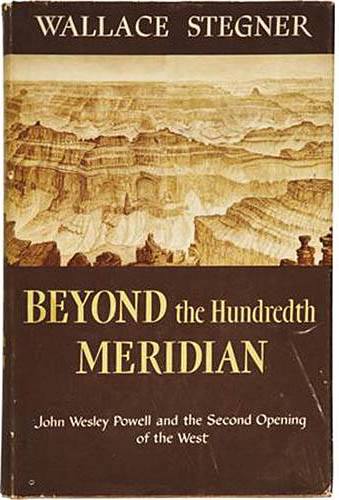 “Do you know what the 100th meridian is? It’s the longitudinal line that symbolically marks where the West begins. It runs through the middle of Nebraska, near Cozad, I think. It’s where the landscape changes and becomes more arid. When I was in college and driving from Iowa back to Utah, I always loved when the landscape got more desolate in western Nebraska…that western landscape.” I tell her about Stegner’s book, Beyond the Hundredth Meridian, and she writes it down in her notebook.
“Do you know what the 100th meridian is? It’s the longitudinal line that symbolically marks where the West begins. It runs through the middle of Nebraska, near Cozad, I think. It’s where the landscape changes and becomes more arid. When I was in college and driving from Iowa back to Utah, I always loved when the landscape got more desolate in western Nebraska…that western landscape.” I tell her about Stegner’s book, Beyond the Hundredth Meridian, and she writes it down in her notebook.
The book is about John Wesley Powell, explorer and visionary of the American West and who initially gave the term “100th meridian” its symbolic heft. In the introduction to the book, historian Bernard DeVoto, reasserts the cautionary tales—this in 1953— for the settlement of the West and the inability to overcome illusions of human mastery of the land. DeVoto calls Powell’s Report on the Land of the Arid Region of the United States from 1878 one of the most remarkable books ever written by an American. And prophetic in its predictions about “human and social failure and the destruction of land.” The rush to civilize and industrialize became unintentional “experiments” that proved Powell’s prescient cautions correct. Even then Powell had reasoned against the myth of unlimited land and resources in the west and now the long-term effects of human hubris may be coming to a head—an unintentional experiment on a global level. And we continue to tell ourselves stories about how we can sustain this current way of living.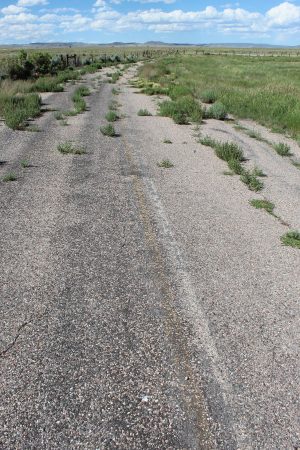
“Things have a way of escalatin’ out here in the west.”
“…we love hearing stories about ourselves so long as the people in the stories are us. But not us…”
Meanwhile, nature does not pay any attention to our stories.
On the last day of filming, we spend the morning on the banks of the North Platte River, just a few miles west of Scottsbluff. It is overcast and chilly next the river. To the north, between us and the bluffs that rim the valley, we can see power lines and a highway with semi-trucks and cars moving by. We are to spread out along the banks and Nate, our man in charge, tells us to do “happy prairie things.”
The Platte River (North, South, and just plain Platte) is a continuous vein of life for humans past and present. Its valley has long been used as a human thoroughfare—Interstate 80, my own route west, parallels the Platte and North Platte through most of Nebraska.
The river starts in the Rocky Mountains and drains an area of over 86,000 square miles, some of the most
arid areas of the Great Plains, into the Missouri River. It provides water for drinking and irrigation and is a
central stopping point for migratory birds. Today, the river is also one of the most endangered waterways in the United States. The Nebraska State Historical Society calls the Platte River valley “one of the great roadways to the west used by fur traders, emigrants, military expeditions, gold seekers and Mormons.” It can be found on maps dating to the 1700s and has been referred to by many different names—“Panis” based on Pawnee; “La Platte” or “The Flat” from the French fur traders; and “Nebraska River,” an Indian term meaning “flat water.” It could also be a major obstacle. In June, it was mud flats, sand bars, and a few feet deep main channel that meandered back and forth—it was too wide for a bridge and too shallow for a ferry. “Too thick to drink, too thin to plow” the 49ers said. The pioneer journey along the Platte to these banks of the North Platte that we are standing on today was not uneventful.
“Once across the South Platte, there was a steep grade as the Trail climbed up California Hill to a high plateau. Deep ruts are still visible there today. Then it was back down the other side on Windlass Hill, so named because it seemed impossible to descend safely without the aid of a windlass (legend has it that
there actually was a windlass set up there for a time, but there is no evidence to support this). All available men and women held on to ropes to slow wagons making the descent.
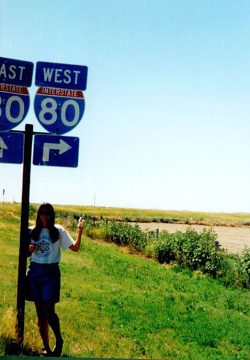 At the bottom was Ash Hollow on the North Platte River, a sylvan glade with clean, cool springs which served as an oasis for the weary adventurers who had just struggled down from atop Windlass Hill. In her journal entry for June 5, 1852, Esther Belle Hanna described the great profusion of wild roses in full bloom to be found there. Along the banks of the North Platte River is a profusion of massive sandstone features rising majestically from the plains. The first, Courthouse and Jail Rocks, could be seen for forty miles or three days away. Next came Chimney Rock. For two days before arriving its solitary finger looked like “an old ruin, then a very sharp cone, more the shape of a chimney than anything else.” (A.J. McCall, June 13,1849)
At the bottom was Ash Hollow on the North Platte River, a sylvan glade with clean, cool springs which served as an oasis for the weary adventurers who had just struggled down from atop Windlass Hill. In her journal entry for June 5, 1852, Esther Belle Hanna described the great profusion of wild roses in full bloom to be found there. Along the banks of the North Platte River is a profusion of massive sandstone features rising majestically from the plains. The first, Courthouse and Jail Rocks, could be seen for forty miles or three days away. Next came Chimney Rock. For two days before arriving its solitary finger looked like “an old ruin, then a very sharp cone, more the shape of a chimney than anything else.” (A.J. McCall, June 13,1849)
Also from the Oregon-California Trails Association: “Scotts Bluff was named for fur trapper Hiram Scott, who was purportedly abandoned for dead sixty miles away and crawled to that spot to die. The legend is retold in many emigrant diaries, the overlanders having heard it at local trading posts and forts.”
Joel Coen is looking at the framing of everything in camera view and the word comes back via the constant
chattering earpiece in Nate’s ear and the yelling that passes from the camera crew to get the guys out of the water. We hear the familiar calls of “Here we go…Rolling, rolling,…Quiet, please (an equipment truck moving slowly immediately stops and shuts off)…Background (our cue to start our happy prairie things) ….Action.” I bend over to pick a wilted sunflower, turn towards the camera, and put it up to my nose smelling for the last vestige of summer, and promenade along the bank, nodding and smiling at fellow extra, Steve, who nods and tips his hat. “Cut…Reset.” I carefully place the flower I picked in a notch of branches so I can reuse it. We do this shot at least 5 times and then a new shot is set up from the other side now. Six production crew members push and pull two full-size covered wagons over the gravel and stagger them to the south of the camera tent. A few of us extras are directed to be doing things around the wagon, tightening ropes, emptying a bucket.
The river filming is finished. We walk back to the Lunchbox trailers. I watch crew members hoisting large cameras over their shoulders and carrying them back to the trucks. The buffet line is set up with lunch. It is our last meal together as it has been confirmed that this is, indeed, the last day of filming. The chefs have set out a lunch spread like no other this time—beef, fish, chicken, multiple vegetables, salads, and desserts, including a large happy birthday sheet cake for the lead actor. I navigate the stairs to the Lunchbox, still stepping on my dress and hoping I don’t trip and drop my plates of food—the most common hazard for me during my stint as a pioneer other than turning my ankle in a prairie dog hole with my low-heeled, stiff leather boots.
I sit across from Patti with her beautiful white hair and matter of fact voice. She lives on a ranch just to the west of where we have been filming and has been telling us great stories about all the local folks and who knows who. I take a bite of my steamed zucchini and she waves her fork and says “Those are from my garden. I’ve been bringing in produce for the cooks to use when I have it.” She tells me that she was from here originally and lived in the south for a while and then came back. Their ranchland has been in the family for generations.
We mill around outside the trailers, taking some last pictures with the crew and Joel Coen, dressed in jeans and a black sweater with a red scarf dashed around his neck, hair windblown and a few days growth of beard, walks by and fellow extra David is able to stop him for a quick pic and the rest of us start to crowd in but he smiles, shakes a few hands, and ducks away. We are holding here next to the river while they get the final shot set up back in yesterday’s location—the rolling prairie hills twenty miles north of Scottsbluff where we have spent most of our time together. When we get the word that the crew is ready for us, we all get in our own cars and drive, in our 19th century costumes, back through Scottsbluff and twenty miles north to the desolate prairie. We load the bus at the white circus tents of Base Camp and ride a few miles until the bus lurches to a halt on a ridge. We scramble down a hillside that is littered with overturned antique chairs and dressers and other furniture.
I think of the Donner Party chucking out belongings in the Salt Flats of Utah as their wheels sunk in and they were losing precious time. To the west of us is a grand vista of overlapping shoulders that slope gently
downward to the North Platte River with the bluffs of the south side of the valley forming a denim blue line in the distance. The sky is layers of gray and violet clouds breaking up above us and sending shafts of muted sunlight toward the prairie. As a child, I always thought that meant someone was going to heaven.
This time there are only two wagons for the extras to position around. At the last steep rise of the hill is another wagon poised to rattle backwards down the hill but held in place by a winch. Just down slope from it is the skeleton of a wagon—a wagon bed on the ground, wheels strewn flat, and a few of the wooden wagon bows rising into the air like the ribs of a carcass. We are directed to tighten ropes on the two intact wagons and look upward in worry at the winched wagon about to careen out of control down the hill. For the last few times, we hear “Quiet, please…Here we go…Rolling, rolling…Background…Action!” We do several takes and then that’s it.
Done. Over. Finished. The last shots for the entire Coen brothers’ “The Ballad of Buster Scruggs” are in the can—4:30 pm Mountain Time, Wednesday, September 27, 2017.
That night, after our post-production party, I packed up my things at the apartment house. I would actually miss the worn carpet and the smell of carpet freshener and tenant Jerry sitting outside in his lawn chair during the day and the porch light when I would get there from set in the wee hours of the morning. 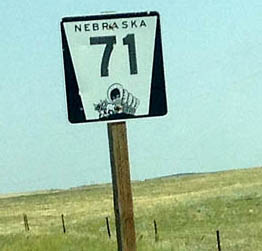
I drove home that night on Highway 71, right past what was left of Base Camp—white hulks of packed up semi-trucks on the prairie. The snack truck loaded up on a flatbed truck and the tents gone. Tears ran down my face. I ended the whole experience just as I had arrived—the only car on a two-lane highway with pitch-black nothingness all around me. Only the ghosts of the prairie silently and invisibly traipsing across the rolling hills, telling stories to anyone who will listen.
Except no one is.
And what about Buster Scruggs, you ask? Just who is Buster Scruggs? I haven’t a clue. We never met him. You’ll just have to wait until “The Ballad of Buster Scruggs” comes to Netflix or a select theater near you.
He’s got a story to tell you.
Mary Donahue is an artist and a Professor of Communication, Music, Art, & Theatre at Chadron State College in Chadron, Nebraska.
To comment, scroll to the bottom of the page.
Don’t forget the Zephyr ads! All links are hot!

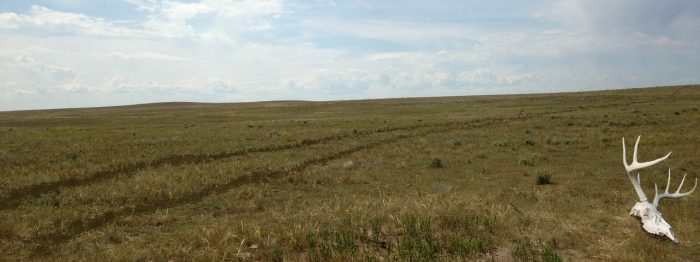
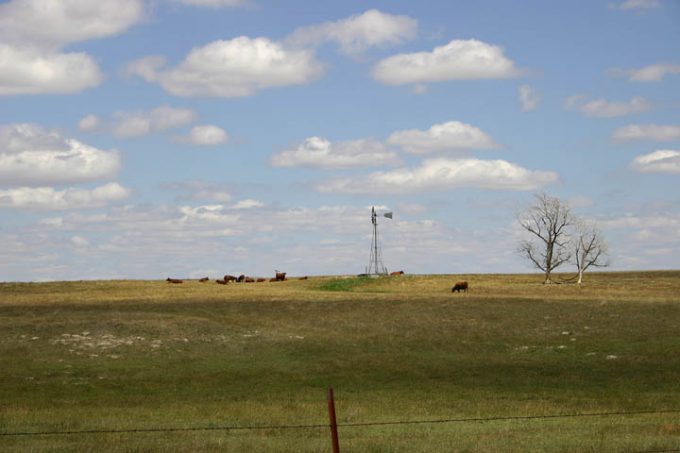
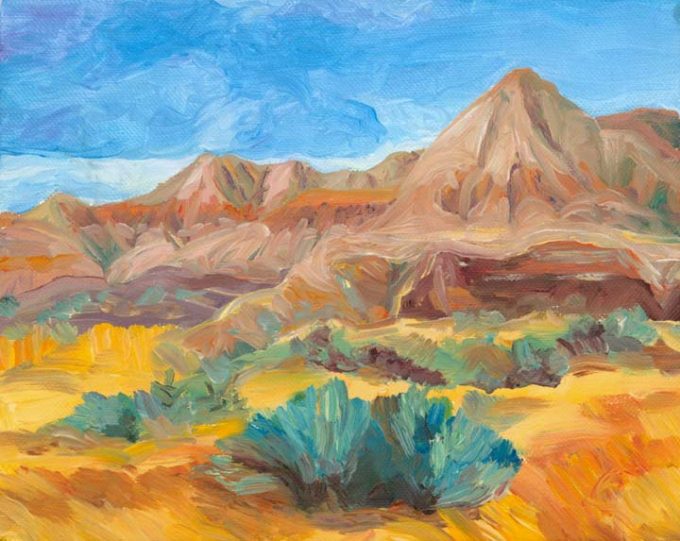

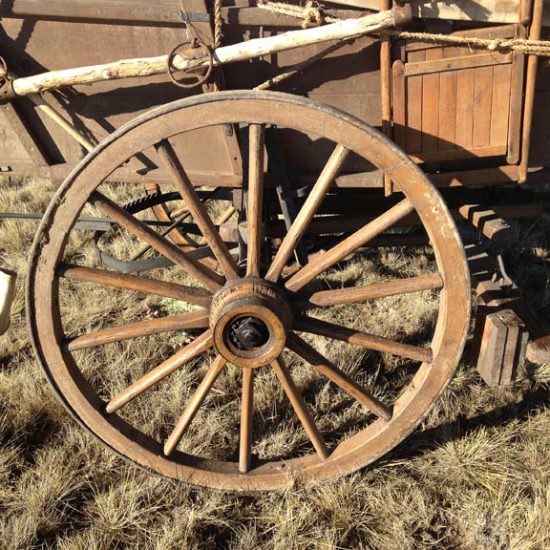
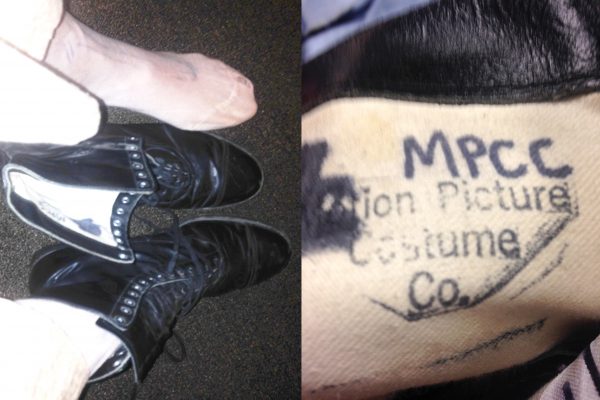
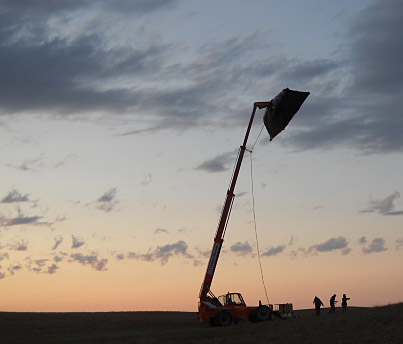
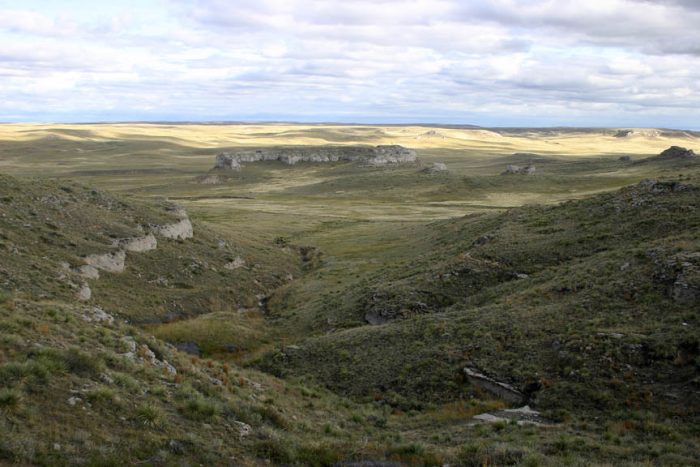
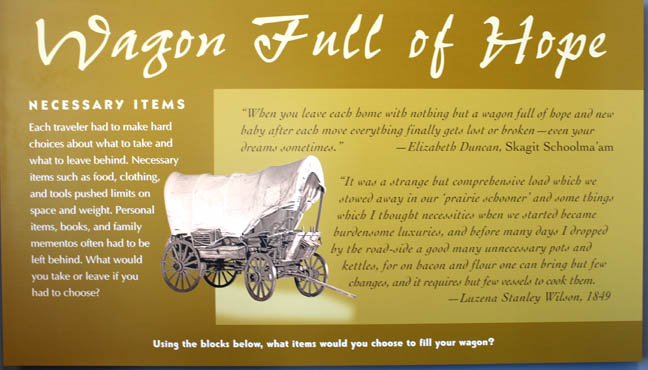
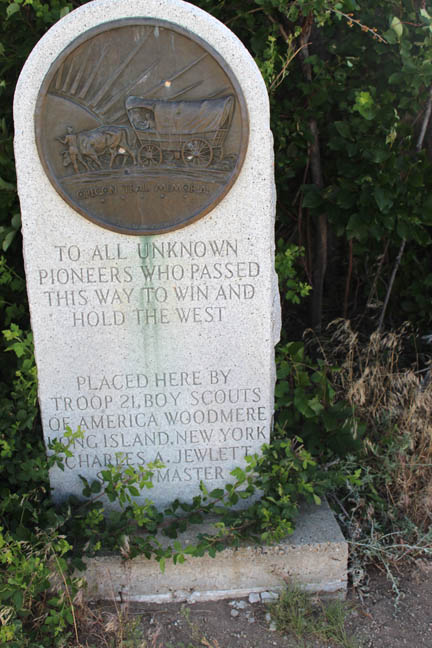
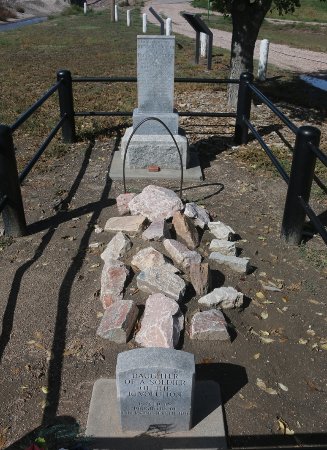

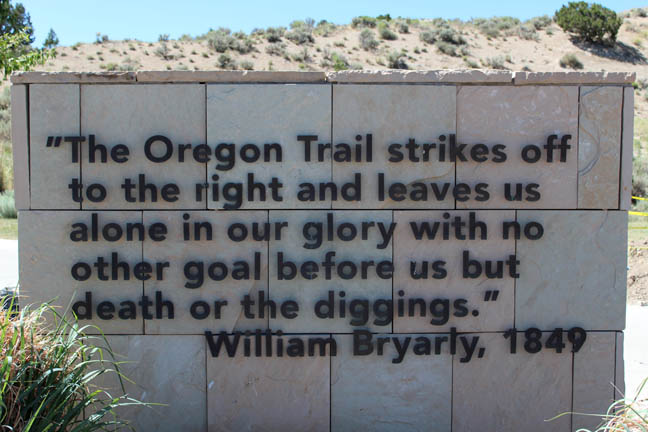
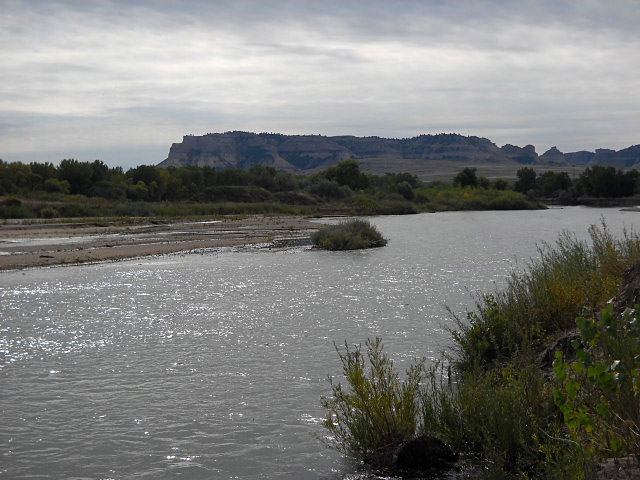
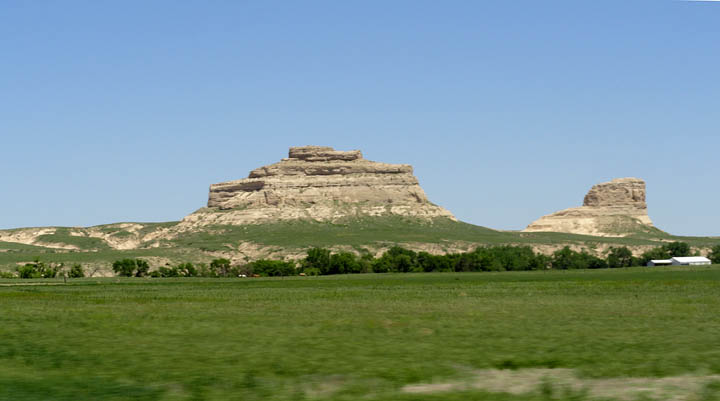
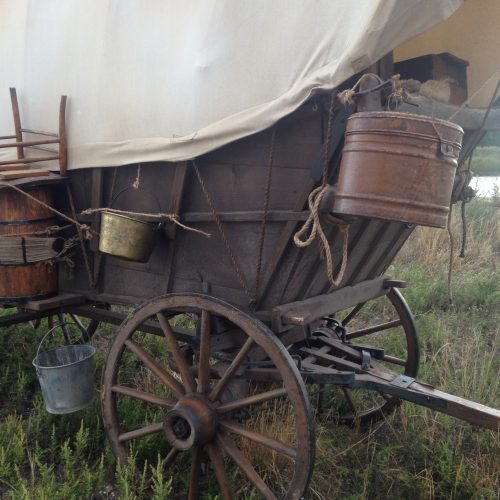
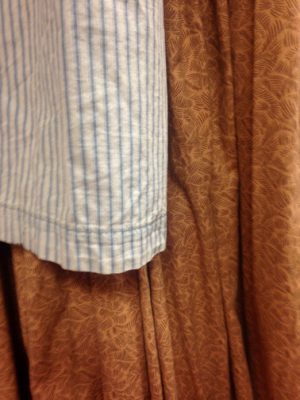
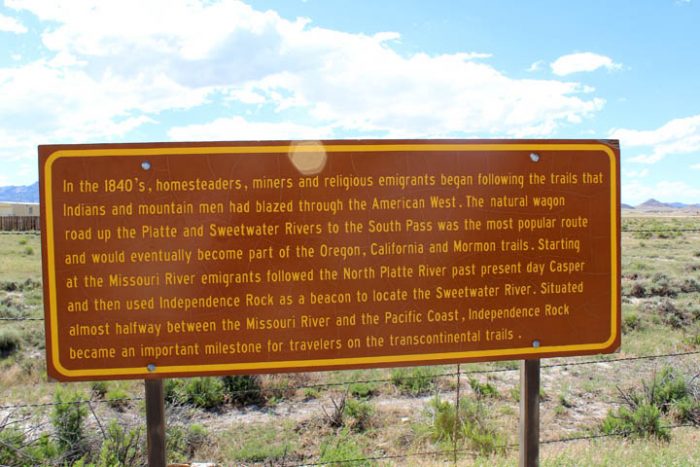


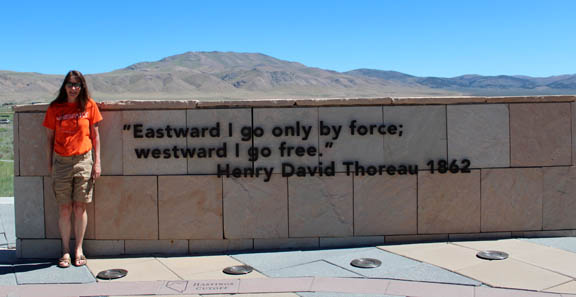



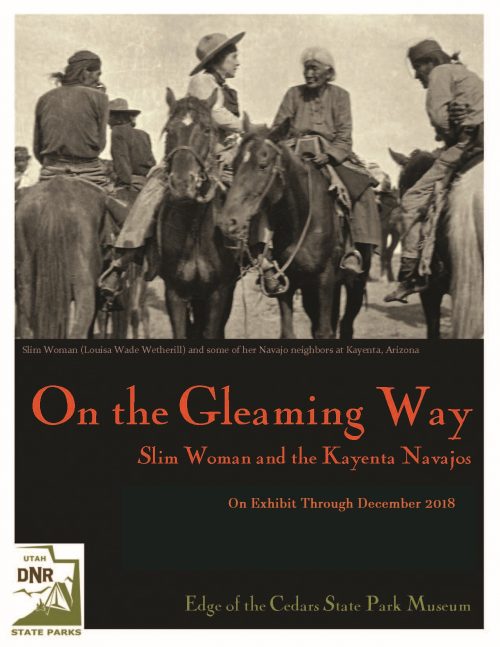
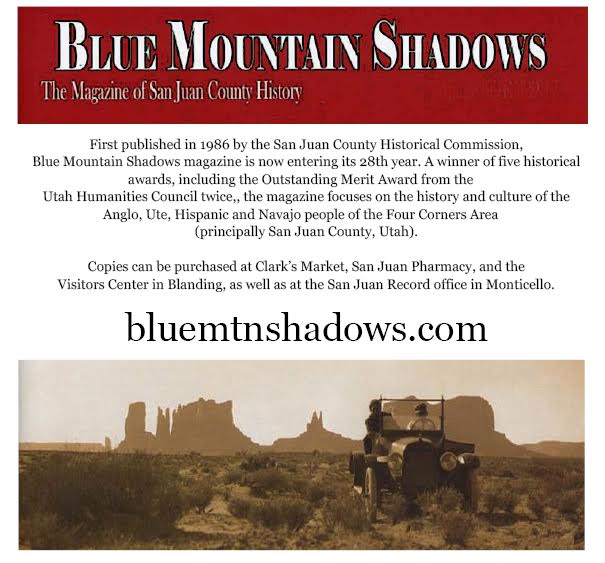
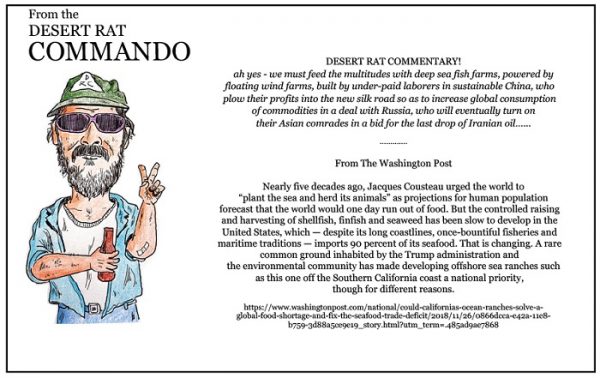
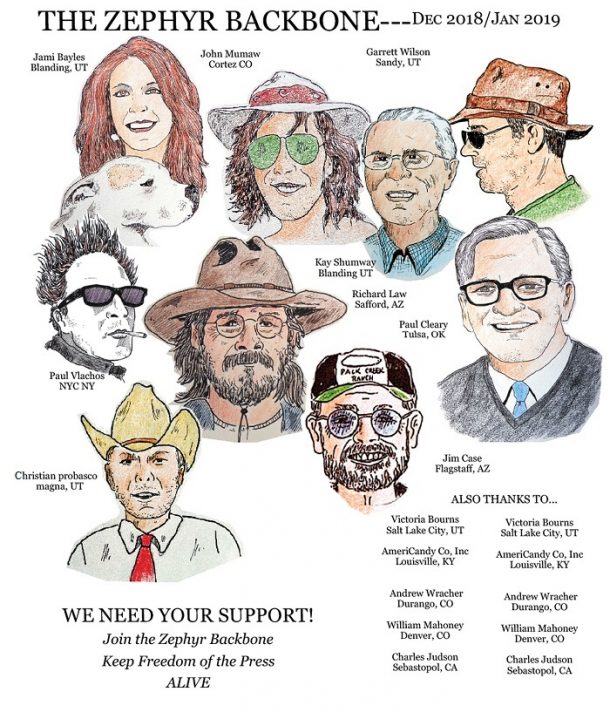
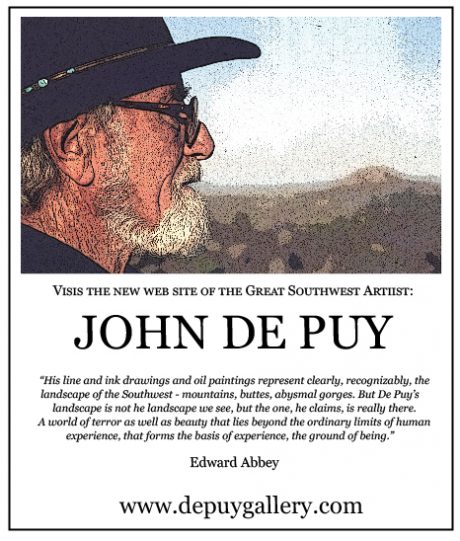

great story! I bet the movie will be awesome…
Wonderful story. I’saw the movie on Netflix and enjoyed it, more or less. Rather dark, I thought. Your casting director got it right. Thank you for sharing.